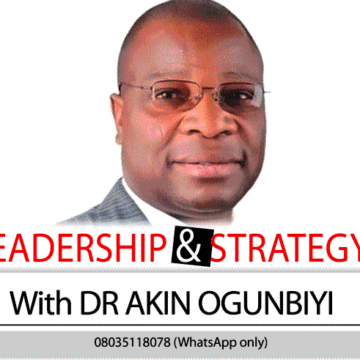Today, we are going to examine how organisations can maximise value and increase profitability by regularly and intelligently paying attention to causal loops in the processes and architecture of the workplace.
It is only a laid-back leader that will not pay close attention to interactions, modes of actions, “lens” of the entire system, patterns of behaviour and dynamics of patterns as the organisation strives every day to deliver value. The causal loops must always be reinforced.
When the loops are regularly reinforced, the leader drives innovative actions. This activity also effectively checkmates pushbacks and prevent negative feedbacks. It unlocks insights and the organisation will perform better and, of course, attract more customers.
Let us now dive deeper with Nan Singh, a renowned consultant on value creation. He pointed out that there is a crucial connection between process management and architectural strategy (regularly adjusted structure and design of the organisation). To be always effective, an organisation must keep aligning team efforts to unlock performance and value.
Aligning regularly fosters an agile workplace and unlocks strategic insights. It engenders timely and swift response to opportunities and changing business needs. The organisation will also drive significant value with continuous adaptation and transformation. It is a continuously working machine that orchestrates beneficial change and value addition.
From time to time, business cases are created for change and renewal of the desire for prospects and customers to see as well as appreciate the organisation’s value. For customers to keep getting more benefits, organisational processes must continuously adapt and innovate.
Let me note at this point that team efforts must fit into the entire enterprise architecture framework. In other words, business strategy and business model must connect with the organisation’s capability model.
What is going on in the workplace must adequately respond to what is going on in the marketplace. An intelligent and sustainable organisation must regularly rejig its business network, supply chain management, human capital management and customer relationship management. The organisation must regularly navigate the marketplace with high value insights, multiple tools, multiple technology and regularly adjusted processes.
To cope with disruptions, inflation and other challenges, the leader must drive a solution organisation that is effectively agile and regularly implementing an operating model that can be pivoted easily and quickly.
This will also give us the enablement to tap into huge opportunities because uncertainty offers opportunities for “adjusted” products, new products and affordable products. Value can regularly be realised from adaptation and innovation. Team members and teams should always create new business cases to fully tap into and maximise these opportunities.
The leader must have and clearly exude a value mindset. He must always be driven with the determination that no value must be lost. Teams must also be focused and counterintuitive (when necessary).
Let us note the following: Teams must articulate their objectives simply for easy understanding and clarity. We must enable buy-ins and contributions from colleagues.
An effective response to causal loops is achieved when an organisation intelligently find and identify insights that matter. Also, we will identify problems to be solved but we must not get lost in the details, just select things that matter (important and useful). This becomes the context for a suitable framework. Teams must be open-minded but be guided by the customer hierarchy in order to provide the needed values.
Let us draw our learning at this point from the Flywheel model. The Flywheel Model is the business strategy that has practically challenged the marketing funnel.
The focus of this strategy is the customer, surrounded by sales and marketing as well as the enabling services provided by the entire organisation. This model stipulates that when we attract customers, we build a bond by keeping them engaged. We delight them by providing impressive and great customer experience. This in turn attracts more customers and the cycle continues.
Customers will become promoters when satisfied and share their experience with others (prospects and even customers). There are three driving factors around this model namely; force, friction and weight. When we spin the flywheel by delighting customers, the wheel keeps spinning. But friction sets in when the customer no longer enjoys our services and values. We create the “weight” with more customers and the flywheel gets bigger and spins faster. As force and weight increase and friction decreases, the wheel accelerates and business grows, with the customer at the center of it all. It is a very effective customer operating model.
Let me conclude by asking these questions: when and how do we identify the loopholes, bottlenecks or corrections in these causal loops on the way to increasing value with process and architecture? How do we make the transactions efficient and different? How do we make the corrections impact effectively on organisation’s performance?
In achieving our goal, we must check all cycles from top-down to bottom-up with the relevant KPIs. We must connect the dots from the order cycle time, delivery cycle time and customer satisfaction cycle time.





